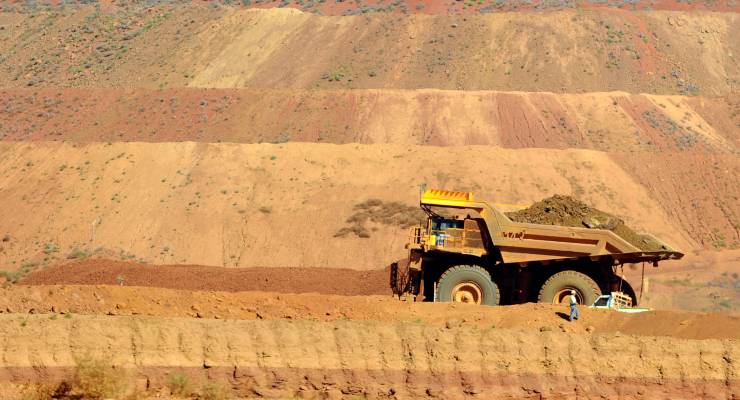
Fresh from the outrage of blowing up ancient Juukan rock shelters in Western Australia — an act which has seen top executives stripped of their bonuses — London-based miner Rio Tinto has embarked once more on its next insult for Australia: plans to develop the massive Simandou iron ore deposit in West Africa.
This is just what the Chinese Communist Party (CCP) has ordered. As evidenced by last week’s decision to launch an anti-dumping action on Australian wine, the CCP is determined to play havoc with Australian exports to China.
Wine joins a growing list of exports — alongside barley and thermal coal — which China is diversifying away from Australia in retaliation for a growing list of real and perceived insults. These include the banning of Huawei Technology from 5G networks, speaking out against China’s egregious human rights abuses in Xinjiang, the imposition of harsh new security laws in Hong Kong, and a recast defence policy that clearly targets China as a threat.
Guinea’s fast-tracked Simandou mine, the El Dorado of African iron ore, would finally help to dispense with China’s reliance on Australia as a source for the vital steel-making ingredient. At present Australia and Brazil have an effective duopoly over the production of high-grade iron ore at the best prices. Iron ore remains far and away Australia’s biggest export — in June the Office of the Chief Economist forecast that Australia’s revenues from the red dirt would be $79 billion in the year ending June 30, 2020, up from $61 billion for 2017.
China is the world’s biggest steelmaker and takes the lion’s share. In 2018 Australia exported US$45.2 billion, and Brazil US$18.2 billion, to China, while South Africa was a distant third with US$3.2 billion.
Simandou has, as it has always had, significant problems — including logistics, West Africa’s politics and thorny corruption allegations for Rio related to its last stab at the lode — but this time around Rio knows that it has Beijing’s very strong backing and it will be developed one way or another.
Rio and its partner Aluminum Corporation of China, better known as Chinalco, control half the deposit with a consortium of Chinese and Singaporean companies holding the other half. It has been widely reported that China’s State-owned Assets Supervision and Administration Commission is keen to develop the deposit backed by Chinese banks.
“Under all scenarios Simandou will be developed, with or without Rio Tinto,” Rio chief executive Jean-Sébastien Jacques told Bloomberg in July. “There is a huge incentive for the Chinese to make it happen now,” he said.
Rio and the CCP go back a long way. China’s appetite for iron ore, aluminium coal and other minerals have made the company rich and powerful. But the relationship really began to blossom following an episode in which Chinese authorities threw four of Rio’s top China salesmen (including Australian national Stern Hu) into jail after they were found guilty of paying bribes and industrial espionage.
The move was widely seen as retaliation for Rio’s decision to spurn a move by Chinalco to double its stake in the company from the 9% it bought in 2008.
Following the release of the executives after nine months, Rio fell over itself to make nice with Beijing, worried that its rivals BHP Billiton, Brazil’s Vale and then nascent Fortescue Metals Group would be favoured.
Part of its effective compensation was to enter into a 2010 joint venture with Chinalco on the Simandou deposit. After the government of Guinea was eventually given 15% in two tranches, Rio and Chinalco were left with 40.05% and 39.95% respectively.
Despite spending $1.4 billion on the first stage of developing the mine, the project stalled and Rio entered into a non-binding agreement to sell its stake to Chinalco for about $1 billion. But this lapsed last year, and now the project has been resuscitated — driven by fresh political considerations in Beijing.
Iron ore prices have defied gravity in the past 12 months due to the Chinese government’s COVID-19 stimulus and COVID-19 related production problems in Brazil (see FMG’s record profits yesterday).
But in the medium term, there are real threats of new mine expansions by Vale and Fortescue Metals Group coming in the next three years that will add more than 100 million tonnes to global iron ore production.
This, together with the fact that that Chinese demand is set to fall over the next decade, has seen price forecasts in the years ahead ratcheted down.
If Simandou comes to fruition, introducing a third major geographical supplier into the market, the calculus in the iron ore sector that has made Australia so wealthy will change forever.








Whatever happened to the “dream” of Australia combining its mineral resources and its gas abundance to become a global producer of steel, aluminium, and manufactured items? Instead of that, we see our global corporate resource owners selling off the base resources, no value adding, no additional employment opportunities (and moving to remote mining). All of which has left Australia with few options in the face of limited (and increasingly hostile) buyers for our raw materials, and as an importer of gas. Pan Global corporations will go where the best profit is and partner to their own best advantage, any benefit to Australia is a secondary byproduct to their transactions with other global players.
It is long overdue for Australian politicians to have a stronger focus on
“national interest” in any future or ongoing resource project development.
As a nation, we may even have to consider using a limited percentage of superannuation funds to bankroll such a change away from dependence on limited buyers or corporate self-interest.
I dunno, Vernon. That sounds dangerously close to socialism to me. Get thee behind me, Satan!
And we would lose what under some level of socialism??
Graeski is being ironic/sarcastic Vernon. We are (almost) all for socialism here if not actual Communists don’t you know? 🙂
Waves red flag with hammer and sickle in response.
If the Guinea mine takes some of Australia’s market share of iron ore sales, wouldn’t this effectively be delivering foreign aid from Australia to Guinea? Remember Trade is the best form of Aid.
Any informed person can see what’s going to happen.
ABARE has a word for our the largest value exports sustaining our national economy – non elaborately transformed products.
It should be our nation anthem – I’m sure Girt Bysee would appreciate a rest.